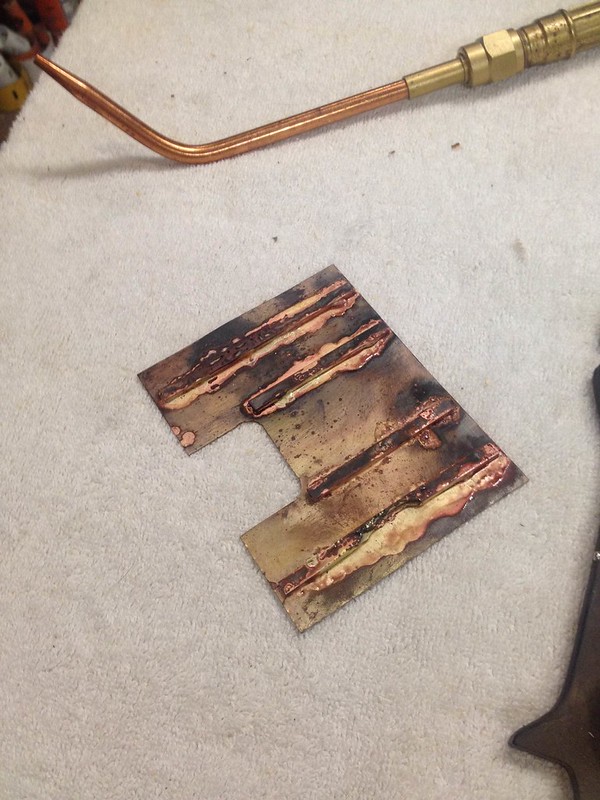This is the result of my latest 2 step failure in silver soldering. The only thing I ever had done before is a butane tank. That was much thicker copper and I used the oxy-acetylene torch for that and it turned out great. This time I figured thinner stock so I could get away with a map gas plumbing torch. Wrong, Didn’t develop near enough heat. It melted the flux well enough that it got liquid and every thing stuck, but certainly wasn’t soldered. So then (a week later) I got out the oxy-acetylene and gave it another shot.
So, I obviously got too much heat in one spot and melted the thin tube, but I got the other soldered pretty well. The only other problem is that the whole piece is a bit warped and not flat. I’m very comfident I could get things soldered well on the next shot, but not so sure about keeping it flat. Is .025 too thin? Or do I need the heat to be more slow and even? I default to you, the experts.

